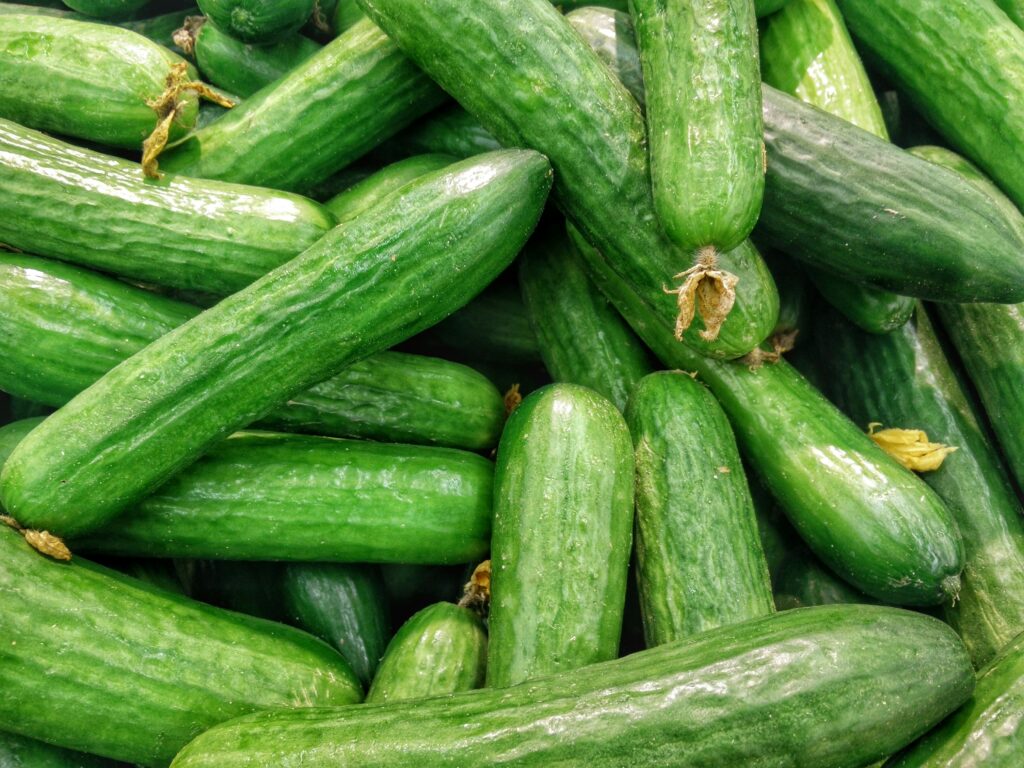Fresh, Crunchy, Nordic: The Ultimate Cucumber Salad with Honey, Mustard, Dill & Horseradish
There’s something uniquely satisfying about dishes that feel both rustic and refined, minimal yet complex. In this article, we introduce a Nordic cucumber salad that captures the essence of Scandinavian flavor: crisp textures, clean ingredients, bold contrasts, and just the right touch of attitude. It’s fresh. It’s crunchy. It’s Nordic. This dish takes the humble cucumber and elevates it into something sensational with a few thoughtful additions — honey, mustard, dill, horseradish, and toasted rye crumbs.
Whether you’re looking for an everyday salad to brighten up a meal or a conversation starter for your next dinner party, this one delivers. It’s deceptively simple, yet impressively layered. It’s a dish that both comforts and invigorates — just like Nordic cuisine at its best.
Let’s dive into what makes this cucumber salad more than just a side dish — but rather a culinary experience.
The Philosophy Behind Nordic Simplicity
Scandinavian cooking is rooted in a deep respect for ingredients. Less is more, as long as the ingredients are the right ones. Nordic food culture favors seasonal produce, minimal waste, and food that feels connected to nature. In this cucumber salad, every element has a reason to be there.
There’s the juicy crunch of smashed cucumber. The deep aromatic heat of horseradish. The sweetness of raw honey. The gentle bite of whole-grain mustard. The freshness of chopped dill. And finally, the deeply toasted rye crumbs that bring earth, smoke, and crunch to the table. Together, they create a salad that hits every note on the flavor scale — sweet, sour, spicy, salty, and umami — while remaining visually minimal and nutritionally clean.
The Power of the Smash Technique
Rather than slicing cucumbers into neat rounds or even elegant ribbons, this salad takes the unconventional route of smashing. At first glance, this may sound brutish — even lazy — but smashing is a technique rooted in culinary logic.
By smashing the cucumbers, you create jagged edges and fractured surfaces that are ideal for soaking up flavor. Dressings cling better. Juices release naturally. Every bite becomes slightly different, making the eating experience dynamic. This technique is found in various Asian cuisines, but it also mirrors the Nordic philosophy of rusticity. A cracked cucumber is more interesting than a perfect one.
To smash properly, use the flat side of a large knife, a rolling pin, or even the bottom of a pot. You want the cucumber to split — not disintegrate. After smashing, you chop the pieces into roughly bite-sized chunks. Salt them generously and let them sit to release excess water. This step is crucial. It intensifies flavor, improves texture, and prevents the salad from becoming soggy.
Ingredients: The Nordic Pantry
This salad is a beautiful example of what can be achieved with just a few kitchen staples. But not just any version of them — quality matters.
The cucumber should be an English or Persian variety. These are preferred for their thin skins and lower seed content. They stay crisp, and there’s no need to peel them.
Kosher salt is used to draw moisture from the cucumbers. This also seasons them early in the process, allowing flavor to penetrate instead of just coating the exterior.
Whole-grain mustard provides depth, texture, and a signature tang. It’s far more interesting than smooth yellow mustard and far more traditional for Nordic-inspired cooking.
Raw honey brings sweetness and floral complexity. Choose local honey if you can — it will have more nuance.
White wine vinegar adds acidity. You could substitute with apple cider vinegar or even a splash of lemon juice if needed.
Horseradish is the wild card. It brings fire. That sharp, nasal heat that clears your senses and livens everything it touches. Use it fresh if possible. If using prepared horseradish from a jar, make sure it’s high quality and not diluted with too many stabilizers.
Fresh dill is non-negotiable. Its green, grassy aroma is synonymous with Scandinavian cooking and lifts the whole dish into the realm of light and herbal.
Finally, we have the rye crumbs. These aren’t just for crunch — they’re a textural counterpoint and a flavor signature. Rye, especially toasted, has a deep, nutty character. Use old rye bread, toast it until golden and dry, and then crumble it by hand or in a food processor.
Full Ingredient List
- 2 large English cucumbers
- 1 teaspoon kosher salt
- 1 tablespoon whole-grain mustard
- 1 tablespoon raw honey
- 1 tablespoon white wine vinegar
- 1 tablespoon olive oil
- 1 tablespoon fresh or prepared horseradish
- 2 tablespoons finely chopped fresh dill
- 1/4 cup toasted rye breadcrumbs
- Freshly ground black pepper, to taste
Step-by-Step Preparation
Step 1: Smash and Salt
Wash your cucumbers and pat them dry. On a sturdy cutting board, use a rolling pin or the flat side of a chef’s knife to gently smash the cucumbers until they crack. You’re not pulverizing them — just breaking them open. Once cracked, cut them into 2–3 cm chunks. Place the chunks in a colander or sieve and sprinkle generously with kosher salt. Let them sit for 15 minutes to drain. This step extracts water and helps concentrate the flavor. After draining, gently pat the pieces dry with a clean kitchen towel or paper towels.
Step 2: Whisk the Dressing
In a medium bowl, whisk together the whole-grain mustard, honey, white wine vinegar, horseradish, and olive oil. Taste and adjust — this dressing should be tangy, a little sweet, with a sharp backnote from the horseradish. Once you’re happy with the balance, fold in the chopped dill. Let the dressing sit for 5–10 minutes for the flavors to mingle.
Step 3: Toss the Salad
Place the drained cucumbers in a mixing bowl and pour the dressing over. Toss gently but thoroughly so each piece is well-coated. Allow the salad to sit for another 10 minutes before serving so the cucumbers can soak up all the flavor.
Step 4: Finish with Rye Crumbs
Right before serving, sprinkle the toasted rye crumbs generously over the top. Do not do this too early, or they’ll become soggy. Add cracked black pepper to taste.
Serving Ideas and Meal Pairings
This cucumber salad is beautifully versatile. It can be served cold or room temperature, and it pairs well with a range of dishes.
Serve it alongside grilled fish, especially fatty varieties like salmon or trout. The sharpness of the horseradish and acidity in the dressing cut through the richness of the fish. It also works well with roasted root vegetables, rye crackers and cheese boards, or Danish-style open sandwiches.
If you’re assembling a Nordic-themed table, pair it with smoked mackerel, herbed potatoes, and hard-boiled eggs. It’s also excellent as a light starter or a picnic side dish. The bread crumbs add enough weight to make it satisfying, even as a standalone lunch with some extra protein on the side — think boiled egg, chickpeas, or leftover roast meat.
The Nordic Table: Cultural Context
In Denmark and other Nordic countries, cucumber salads are nothing new. There’s “agurkesalat,” a sweet pickled cucumber dish typically served with meat dishes like frikadeller or pork roast. There’s also “pressgurka,” a lightly pickled and pressed cucumber dish in Sweden.
This version is a modern reinterpretation. Instead of pickling, we smash and salt. Instead of sugar and vinegar, we layer complexity with mustard and horseradish. The addition of toasted rye breadcrumbs introduces the culinary equivalent of depth — flavor and crunch that elevates the salad from predictable to unforgettable.
The Nutritional and Functional Benefits
This salad isn’t just delicious — it’s healthy and functional.
Cucumbers are over 95% water, making them a hydration booster. They also contain antioxidants like beta-carotene and flavonoids that combat inflammation. Dill adds vitamin C and antibacterial compounds. Horseradish has been used in traditional medicine to stimulate circulation and digestion. Honey offers trace enzymes and minerals, while rye contributes fiber and slow-release carbohydrates.
Together, these ingredients make this salad not just a flavorful addition to your meal, but a wellness-forward one. It’s gluten-free if you use gluten-free rye alternatives, vegetarian, and can easily be made vegan by substituting agave for honey.
Flavor Science: Why It Works
What makes this salad so satisfying is the way it interacts with your palate. It engages all five flavor profiles:
- Sweet: from honey
- Sour: from vinegar
- Spicy: from horseradish
- Salty: from early seasoning
- Umami: from the toasted rye and mustard seeds
Texture is just as important. The cucumber is crisp but irregular. The breadcrumbs are crunchy. The dressing is rich and emulsified. It’s a study in contrast and balance.
Customization Ideas
This salad is a brilliant base, but also highly adaptable.
- Add thinly sliced radishes for peppery bite.
- Swap dill for tarragon or chervil for a more French twist.
- Use black garlic instead of horseradish for a sweeter, more fermented kick.
- Add feta or goat cheese for creamy contrast.
- Mix in toasted seeds (sunflower, pumpkin) for extra crunch and nutrition.
- Add chickpeas or lentils to make it heartier as a main course salad.
No-Waste Kitchen Tips
In line with Nordic values of sustainability, this recipe is nearly zero-waste. Save the cucumber juice released after salting and use it in cocktails or savory broths. Leftover dill stems can go into vegetable stock or infused oil. The rye crumbs come from stale bread that might otherwise be discarded — giving it a delicious second life.
Final Thoughts: Minimal Ingredients, Maximum Impact
This cucumber salad is more than a recipe — it’s a statement. It represents what food can be when you strip away excess and focus on quality, technique, and intention. With just a few pantry staples and 20 minutes, you create something fresh, exciting, and grounded in tradition.
Whether you serve it in a fine dining context or as a weekday lunch, this salad will turn heads. It will also likely become part of your regular rotation, because once you taste the crunch, the tang, the bite, and the sweetness all dancing together — you won’t forget it.
For those who love clean eating, bold flavor, and food with a cultural story — this is a dish worth returning to, again and again.

